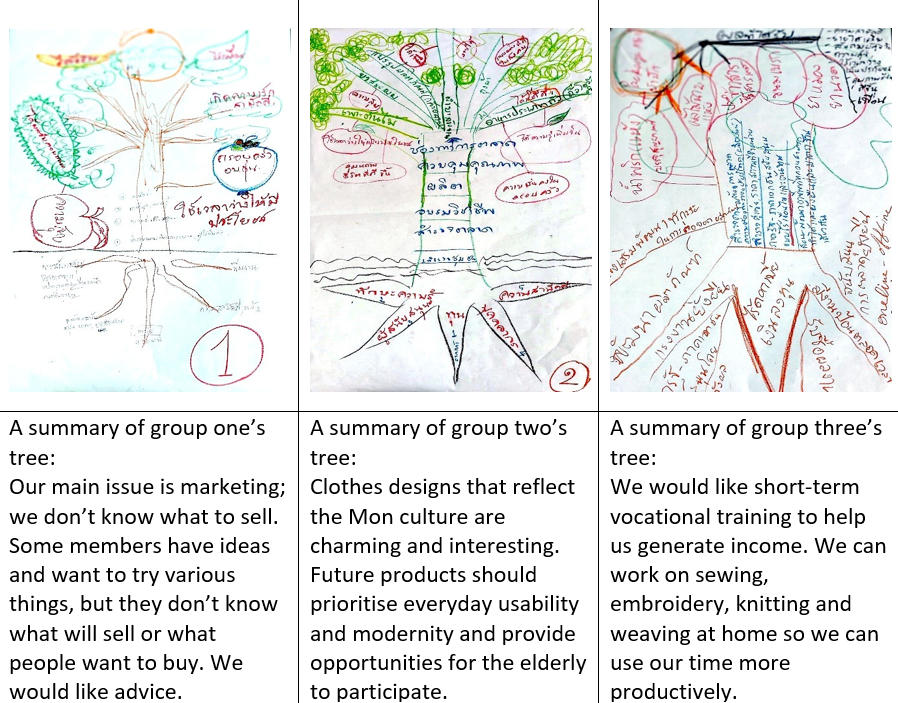The Tree of Hope activity is an evaluation and monitoring tool we use as faculty members of the journalism department at Siam University to analyse participants’ reactions to projects. It involves writing down suggestions and aspirations and using them to identify follow-up activities and goals for projects that we reflect on as a group. The Tree of Hope activity encourages participants who are hesitant to express their opinions to engage in the feedback process.
When participants belong to the same community, it can also strengthen bonds. Such was the case for our recent project which involved gathering insights from members of a senior citizens’ club about the production and distribution of traditional clothing to boost the economy of their small Bangkok community.
Here’s how to use the Tree of Hope activity for post-project evaluation and monitoring:
1. Prepare your equipment: you’ll need paper or card, pens or markers and decorating tools such as coloured paper, scissors and glue.
2. Clarify objectives: explain the purpose of the activity to give participants a focus. In our case, we wanted the club members to analyse their resources to understand how to develop their community.
3. Begin the activity: split participants into small groups and have them draw a tree and fill it in with goals, hopes and insights relevant to the project. They can decorate it as they wish.
4. Reflect on the content of the trees: encourage participants to reflect collectively on what they have written down. Pose questions such as:
- What is the likelihood of realising these aspirations?
- What actions should the project organisers/participants take to achieve these goals?
- What factors might influence the future of the project?
Here are some trees our participants created:

- Resource collection: Skills every research manager needs
- Lessons from completing an award-winning knowledge transfer project
- How to use a project management approach to help run research projects
The key benefits of the Tree of Hope activity
1. It builds trust: the activity is primarily designed to allow participants to articulate individual and collective aspirations. By sharing these, they gain clarity on common goals, transparency and trust.
2. It promotes mutual understanding: discussing different perspectives facilitates deeper understanding and respect among group members and helps to bridge any gaps in knowledge.
3. It drives positive change: by discussing hopes and aspirations collectively, the group can identify new initiatives and pathways for the project.
4. It increases engagement: this activity creates a tangible and visual representation of aspirations that can be more engaging than just verbal or written feedback and can serve as a constant reminder of collective goals.
5. It prompts detailed feedback: in our experience, tools like these help participants take their time to organise their thoughts, leading to more detailed and useful responses than those gained via other data collection methods.
The Tree of Hope activity is an effective post-project evaluation tool used in the journalism department at Siam University. It encourages participant engagement and feedback through a creative process. Particularly effective in community settings like the Mon community in Bangkok, this method builds trust and mutual understanding and drives positive change.
Suthawan Thummasungwan and Prakit Arsa are faculty members of the journalism department at Siam University.
If you would like advice and insight from academics and university staff delivered direct to your inbox each week, sign up for the Campus newsletter.




comment